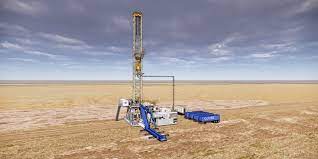
Breaking News
We Americans Need to Dig Deep into Historical Perspective
 A timeless clip of Michael Burry explaining how he used credit default swaps...
A timeless clip of Michael Burry explaining how he used credit default swaps...
 The next financial crisis won't start in a bank lobby. It's already brewing in the market
The next financial crisis won't start in a bank lobby. It's already brewing in the market
Top Tech News
 This tiny dev board is packed with features for ambitious makers
This tiny dev board is packed with features for ambitious makers
 Scientists Discover Gel to Regrow Tooth Enamel
Scientists Discover Gel to Regrow Tooth Enamel
 Vitamin C and Dandelion Root Killing Cancer Cells -- as Former CDC Director Calls for COVID-19...
Vitamin C and Dandelion Root Killing Cancer Cells -- as Former CDC Director Calls for COVID-19...
 Galactic Brain: US firm plans space-based data centers, power grid to challenge China
Galactic Brain: US firm plans space-based data centers, power grid to challenge China
 A microbial cleanup for glyphosate just earned a patent. Here's why that matters
A microbial cleanup for glyphosate just earned a patent. Here's why that matters
 Japan Breaks Internet Speed Record with 5 Million Times Faster Data Transfer
Japan Breaks Internet Speed Record with 5 Million Times Faster Data Transfer
 Advanced Propulsion Resources Part 1 of 2
Advanced Propulsion Resources Part 1 of 2
 PulsarFusion a forward-thinking UK aerospace company, is pushing the boundaries of space travel...
PulsarFusion a forward-thinking UK aerospace company, is pushing the boundaries of space travel...
 Dinky little laser box throws big-screen entertainment from inches away
Dinky little laser box throws big-screen entertainment from inches away
 'World's first' sodium-ion flashlight shines bright even at -40 ºF
'World's first' sodium-ion flashlight shines bright even at -40 ºF
Advanced geothermal drilling is 70% faster and 50% cheaper than 2022

The new record is one in a series of strides Fervo is making to produce affordable, usable, clean power through a process using an enhanced geothermal system (EGS). Last year, Project Red passed its 30-day well test and was able to produce 3.4 megawatts (MW) of power, roughly the energy used by 500 US households. In November, Google announced that the plant was fully operational and connected to the same grid in Nevada to which some of Google's data centers are linked. Fervo is now developing an even larger project in Utah that aims to come online in 2026, and reach its full capacity for pumping out 400 MW of non-stop power in 2028. The wells it is drilling there are even hotter and over 2,100 feet (640 meters) deeper than those from Project Red, so the faster drilling time is even more impressive.

 The AI money machine!
The AI money machine!

